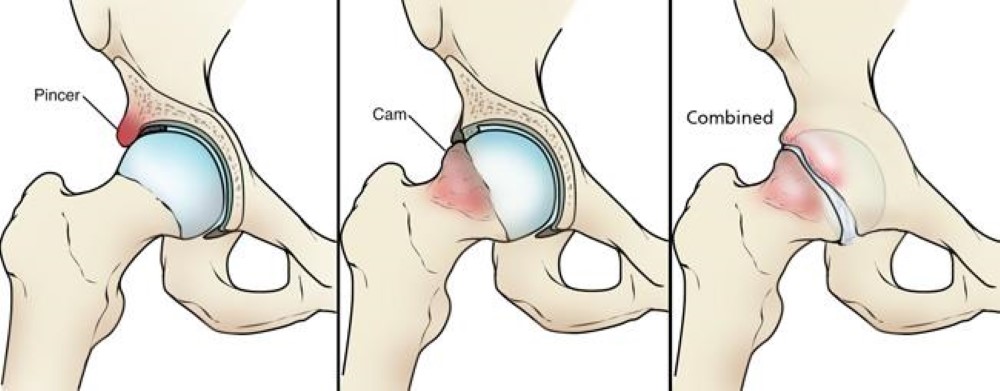What is “FAI?”
Femoroacetabular impingement syndrome, commonly known as “FAI”, is a deformity of the hip joint that limits range of motion and can cause a “pinching” sensation in and around the hip joint. There are typically three forms of impingement: Cam, Pincer, or combined.
The Cam form of FAI is when the femoral head and neck (the top of the long bone in your thigh) is not perfectly round so that the head and the socket do not connect or move smoothly when moving the hip joint, often times restricting range of motion.
The Pincer form of FAI is when the socket overcovers the head of the femur, also limiting motion and causing impingement.
It is also possible to have a combination of Pincer and Cam.

Sometimes people have FAI and never have symptoms and can have an active, comfortable life. Other times, FAI can result in labral tears, cartilage damage, and potentially earlier onset of arthritis can result from FAI.
Warwick Agreement
In 2016, A team of 22 panel members, 1 patient from 9 countries, and 5 specialists created a Warwick Agreement to assist with properly diagnosing and treating patients with FAI Syndrome.
Listed below are signs and symptoms, positive clinical signs, and imaging findings that are consistent with the diagnosis of FAI syndrome. For the full article, check out the link below but here is a summary of the agreement taken directly from the published article.
https://bjsm.bmj.com/content/bjsports/50/19/1169.full.pdf
5 Essential Elements of FAI:
- 1. Abnormal morphology of the femur and/or acetabulum
- 2. Abnormal contact between femur and acetabulum
- 3. Vigorous hip motion resulting in abnormal contact and collision
- 4. Repetitive motion resulting in continuous insult
- 5. Presence of soft tissue damage
Symptoms of FAI:
- 1. Motion-related or position-related pain in hip/groin
- 2. Pain in back, buttock, or thigh
- 3. Feelings of locking, clicking, catching, stiffness, restricted mobility, or giving way
Clinical Signs of FAI:
- 1. Pain provocation with performance of hip impingement test: FADIR (flexion, adduction, internal rotation)
- 2. Typically restricted mobility with internal rotation in flexion
Imaging Findings of FAI:
AP radiograph of pelvis and lateral femoral neck to identify cam or pincer morphologies
Appropriate Treatment of FAI:
Physical therapy: improves hip stability, neuromuscular control, range of motion, strength, and movement patterns
Surgery (open or arthroscopic): improves hip morphology and repairs damaged tissue
If you have questions or require treatment for FAI Syndrome, give Omaha Physical Therapy Institute a call today!
Make an Appointment Today! »
Your Comeback Story Starts Here!
